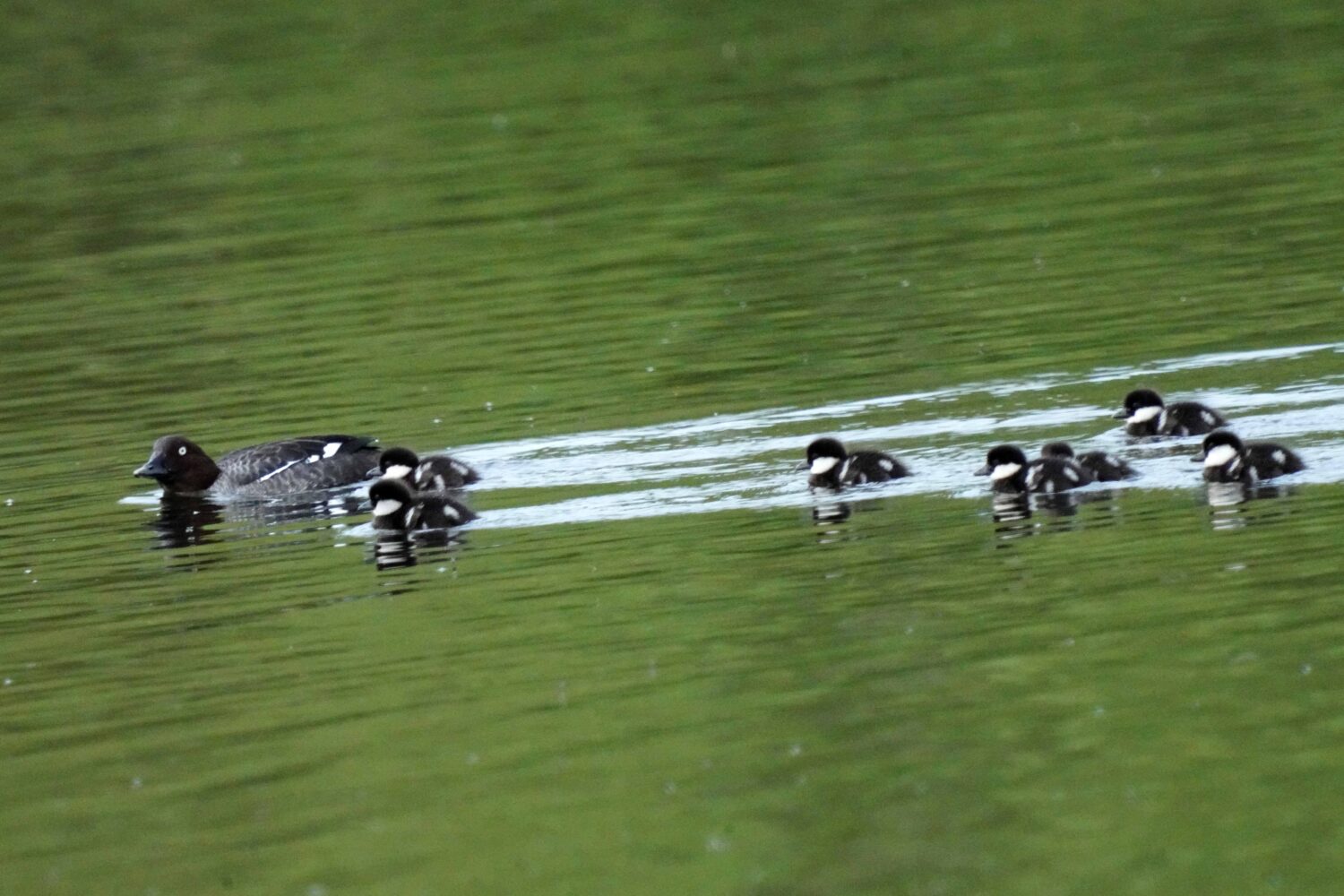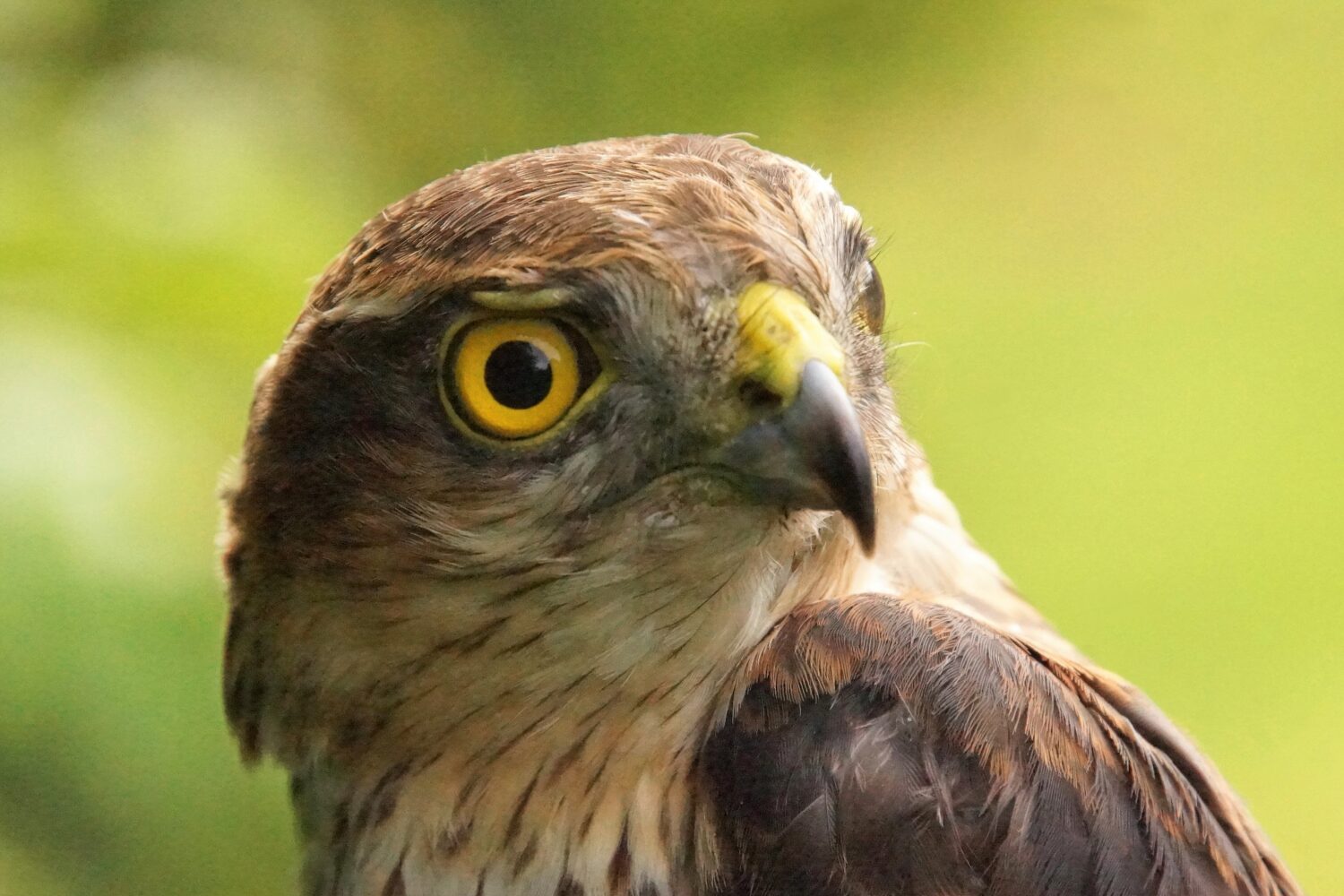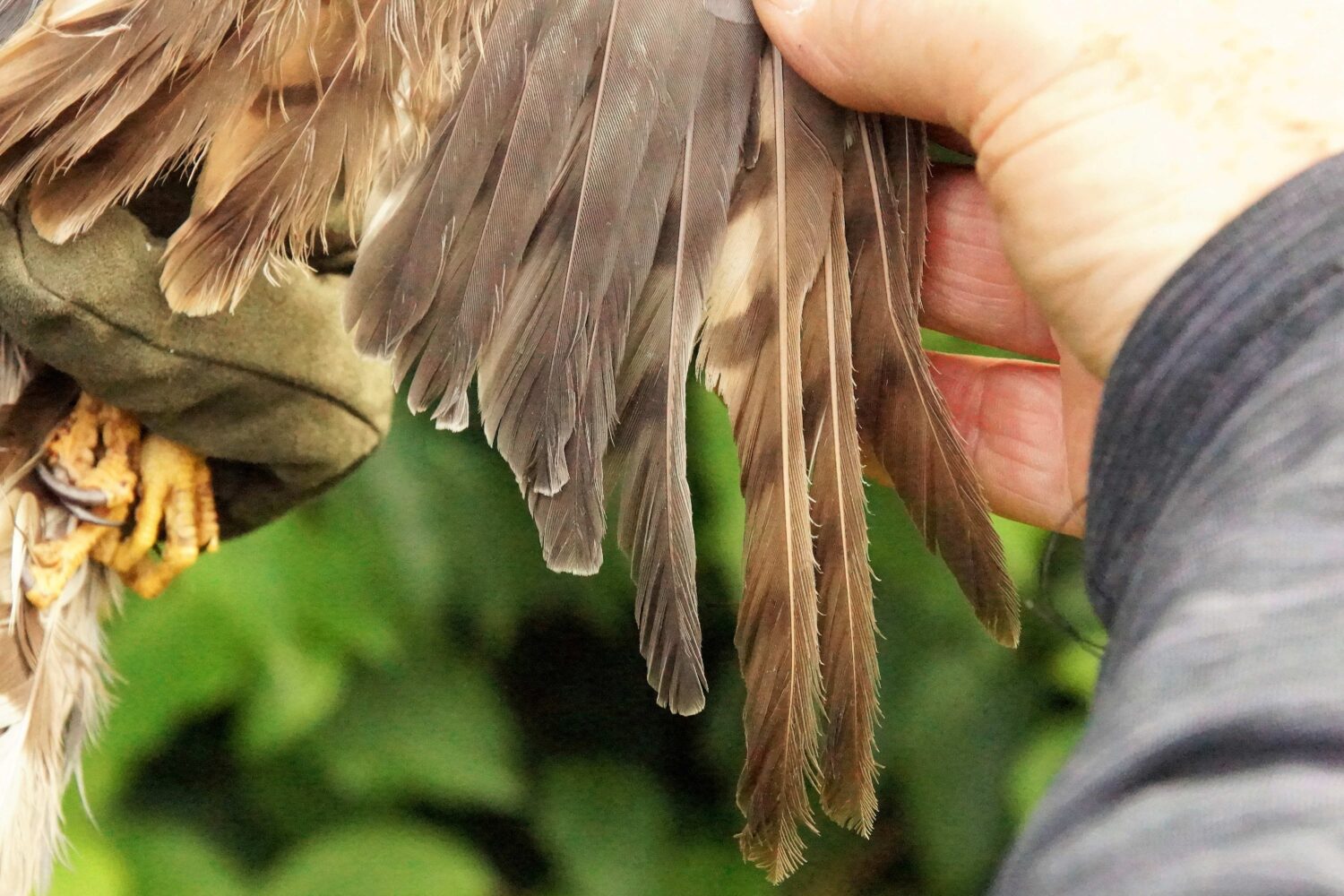Local ornithologist, Phil Hanmer reflects on a month of bird ringing in Ringer’s Year July 2023.
I said this last month ‘’We thought we had sort of finished with Tawny Owls for this year’’ but yet again a surprise, and interesting female owl, turned up when checking a Barn Owl nest site near Thropton. There is a small stone building, really an outlier of the Cragside Estate, which houses a metal Waterwheel (which has never been removed to join the industrial archaeology collection at Cragside) and in the building we also have a Barn Owl box. However, Barn Owls have only rarely entered the building and back on the 18/6/13 I ringed a Tawny Owl roosting in it. On the 18/6/23 we again encountered the same owl who is now around 12 years old. We don’t know where she actually nests, not in this building as far as we can tell but clearly, she likes it as a super warm roost site.
Nesting at the same time as the tawny owls are our rare nesting Goldeneye ducks. These had 13 nests; out of 20 locations compared to 14 last year. However, only 10 were successful compared to 11 in 2022. Amazingly one duck survived an attempt by a tawny to take over her nest in which she had already laid 7 eggs and went on to lay another 5 as reported last month. She actually hatched 8 ducklings. Two people observed the unusual site of an incredible 18 young and one female back on the 16th May at Branton. Having now checked on all the successful boxes and tried to march the hatching of eggs to the siting of broods out on the water I can’t account for this number from any ‘one’ nest so it’s almost certainly come from a merger of two broods contradicting what I said last month when I ascribed this large brood to a single female. We did suspect from the geo-logger tracking we did a few years ago that some females left the site very soon after taking their young to water; apparently getting other adults to look after their young! I can’t quite match this but I can include a photo of two broods from the 18th May of 10 on a rock with their parent bird and 7 on the water. A sharp eyed birdwatcher watched a brood of 7 from the same location on the 25th (possibly a duplicate observation) and an entirely different brood near Hedgeley, of 14, on the same day.

We have not quite finished monitoring this years nesting Barn Owls so I will confine myself to reporting two returns from the BTO which were sadly of owls found dead. Both were 6 years old but one (GV65409) was ringed near Longhorsley and found dead just a mile or so away; while the other (GV55883) was ringed near Warkworth and found dead at Whittingham. This is an unusual movement from the coast to inland and over both the A1 and A697.
Eventually getting around the obstruction of the terrible summer weather we finally managed to start at Howick Ringing Station on the 28th July. This was very productive with 48 birds being captured 6 were retraps including a Robin, a Blue Tit and a Coal Tit all from 2021. Of the new birds most were juveniles of the year with 3 Robins, 5 Chaffinches, 2 Goldcrests, 3 Willow Warblers, 2 Dunnocks, a single Chiffchaff, a Wren and a Sparrowhawk; with the balance made up of tits (Blue, Great and Coal). The Willow Warblers were interesting (especially as this is no longer a common bird at Howick) one was an adult female; another probably a male; while the third was a juvenile. All will start migrating to Africa in August with the juvenile leaving first; travelling down through Western France, Spain and Morocco before crossing the Sahara to ‘winter’ in the Gulf of Guinea on the Ivory Coast and in Ghana. The Sparrowhawk caused some excitement; not least because it was the only bird captured during the morning with talons capable of causing some injury to ringers! It proved to be a male, probably hatched in 2022; with some very worn primary feathers which it urgently needed to replace in.


We did manage to ring again on the 29th but only captured 23 birds. The retraps included a female Coal Tit that is at least three years old. The new birds were mostly tits but also included a House Sparrow (not a common bird at Howick) and three juvenile Willow Warblers, confirming my supposition that they have successfully nested within our ringing site.
We will continue to try and ring at Howick on Friday & Saturday mornings into the Autumn.